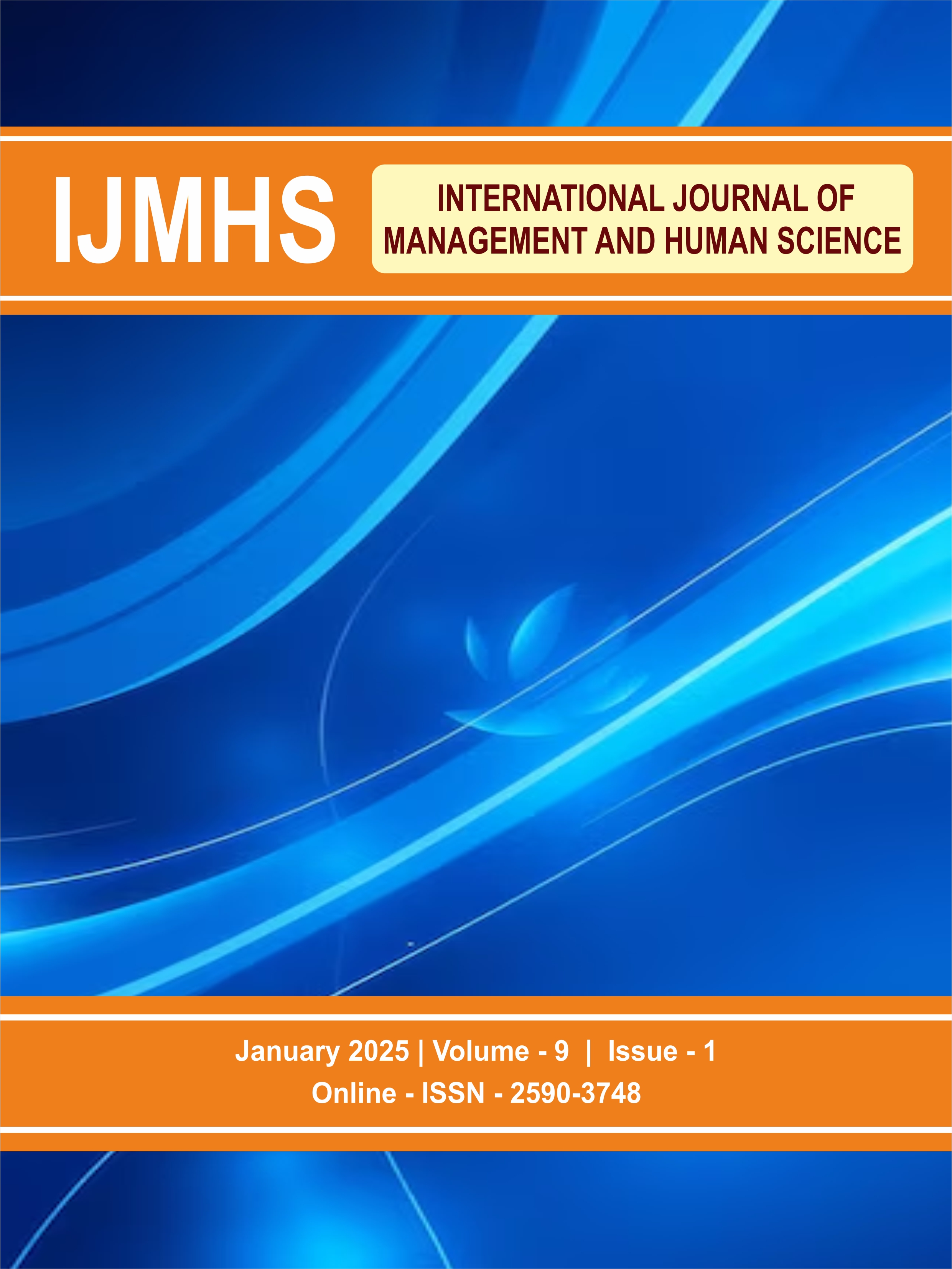Women-Led Development through Women Workforce Integration in India: Laying the Groundwork for Vikshit Bharat @ 2047
DOI:
https://doi.org/10.31674/ijmhs.2025.v09i01.008Abstract
From ancient civilisations to present-day India, Indian women have played a critical role in the country's socioeconomic growth. Given the importance of women in defining socioeconomic growth, the Indian government has launched various projects to encourage women's education, entrepreneurship, and empowerment. However, women's workforce participation in India is among the lowest in the world. This discrepancy impedes the country's progress towards inclusive and sustainable development. In this context, the present study aims to investigate how the integration of women's workforce paves the way for women-led development from the perspective of women's development, as well as how it contributes to India's journey to become a developed nation by 2047. This study emphasises the multifaceted, constructive effect of female workforce inclusion on driving women-led development in India. This study offers a unique perspective that can help policymakers design targeted policies to remove roadblocks to the nation's progress toward achieving women-led development and being a developed country, or Vikshit Bharat, by 2047.
Keywords:
Vikshit Bharat, Women Workforce, Women-Led Development, Workforce IntegrationDownloads
References
Bardasi, E., Gassier, M., Goldstein, M., & Holla, A. (2021). The profits of wisdom: The impact of a business support program in Tanzania. The World Bank Economic Review, 35(2), 328-347. https://doi.org/10.1093/wber/lhz048
Fang, S., Goh, C., Roberts, M., Xu, L. C., & Zeufack, A. (2022). Female entrepreneurs and productivity around the world: Rule of law, network, culture, and gender equality. World Development, 154. https://doi.org/10.1016/j.worlddev.2022.105846
Farrell, M., Sarkki, S., Fransala, J., Murtagh, A., Weir, L., Ahl, H., ... & Heikkinen, H. I. (2024). Empowering Women-Led Innovations: Key Players in Realising the Long-Term Vision for Rural Areas. European Countryside, 16(4), 563-588. https://doi.org/10.2478/euco-2024-0029
Gupta, P., & Kothe, S. (2024). Gender discrimination and the biased Indian labour market: evidence from the national sample survey. World Development Perspectives, 35. https://doi.org/10.1016/j.wdp.2024.100613
Heath, R., Bernhardt, A., Borker, G., Fitzpatrick, A., Keats, A., McKelway, M., ... & Sharma, G. (2024). Female labour force participation. VoxDevLit, 11(1), 1-43. Retrieved from https://voxdev.org/sites/default/files/2024-02/Female_Labour_Force_Participation_Issue_1_0.pdf. Accessed on 5th December 2024.
Human Development Reports. (2024, March 13). Human Development Reports 2023-24. United Nations. Retrieved from https://hdr.undp.org/content/human-development-report-2023-24. Accessed on 15th December 2024.
Islam, A. M., Gaddis, I., Palacios López, A., & Amin, M. (2020). The labor productivity gap between formal businesses run by women and men. Feminist Economics, 26(4), 228-258. https://doi.org/10.1080/13545701.2020.1797139
Kanyagui, M. K., Sajithkumar, K. J., Velankar, Y., Mohan, R., Viswanathan, P. K., & Magnani, N. (2024). Livelihood challenges faced by women in rural India: exploration of solutions using participatory action research. Development in Practice, 34(4), 512-526. https://doi.org/10.1080/09614524.2023.2285251
Ministry of Commerce & Industry. (2024, December 10). India’s Women Entrepreneurs. Press Information Bureau. Retrieved from https://pib.gov.in/PressReleasePage.aspx?PRID=2082821. Accessed on 10th December 2024.
Ministry of Statistics & Program Implementation. (2024). Annual Report Periodic Labour Force Survey (PLFS) 2023-24. Government of India. Retrieved from https://www.mospi.gov.in/sites/default/files/publication_reports/AnnualReport_PLFS2023-24L2.pdf. Accessed on 15th December 2024.
Ramya, U., Pushpa, A., & Ghosh, N. (2024). Women entrepreneurship–A way towards sustainability. In The framework for resilient industry: A holistic approach for developing economies (pp. 281-299). Emerald Publishing Limited. https://doi.org/10.1108/978-1-83753-734-120241020
Senapati, A. K., & Parida, D. (2024). Labour force participation, gender equality and women’s empowerment through micro-entrepreneurship: Evidence from Odisha, India. IMIB Journal of Innovation and Management, 2(1). https://doi.org/10.1177/ijim.231200316
Tirkey, S. P. (2022). Empowering India with Women-Led Development. Indian Journal of Law and Legal Research, 4(1). Retrieved from https://www.ijllr.com/post/empowering-india-with-women-led-development. Accessed on 19th December 2024.
Ubfal, D. (2024). Supporting Women-Led Businesses: Narrative Review of Recent Causal Evidence. The World Bank Research Observer. https://doi.org/10.1093/wbro/lkae012
Ullal, P. S. (2024, October 29). The under-representation of women in the judiciary. The Hindu. Retrieved from https://www.thehindu.com/opinion/lead/the-under-representation-of-women-in-the-judiciary/article68807637.ece. Accessed on 15th December 2024.
World Bank. (2023). Gender Statistics. World Development Indicators. Retrieved from https://databank.worldbank.org/source/gender-statistics/Series/SE.TER.ENRR.FE. Accessed on December 2024.
Published
How to Cite
Issue
Section
License
Copyright (c) 2025 International Journal of Management and Human Science (IJMHS)

This work is licensed under a Creative Commons Attribution-NonCommercial-NoDerivatives 4.0 International License.
















